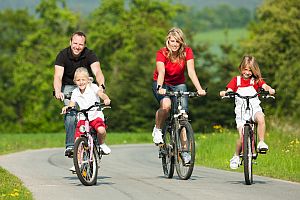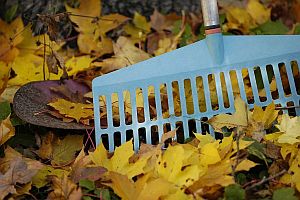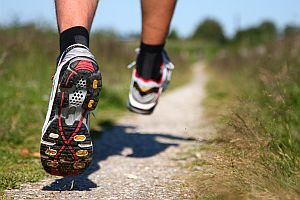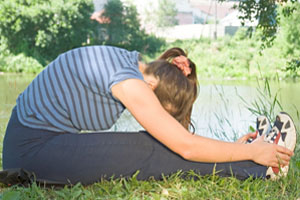Standing More Often: A Prescription for Better Health?

It seems that almost every day we see new research coming out about the perils of inactivity and sitting too much. We’re becoming a sedentary nation, and it’s taking its toll on us, causing or contributing to epidemic levels of Type 2 diabetes, heart disease, and cardiovascular problems. So it’s interesting to look at some of the research that’s being done on the “opposite of sitting”. And no, that’s not necessarily exercising—it’s standing. Some studies are indicating that simply standing for a few more hours per day may be even better for your health than joining a gym.
While this type of conclusion may be startling at first, it’s much less shocking when you stop to consider the number of hours that we actually spend sitting each day. One recent study found that most Americans spend up to 12 hours a day sitting. If you add in the hours we spend sleeping, that means that most of us spend up to 20 hours a day being sedentary. One sad result of all this physical inactivity: Those who sit all day long live an average of two years less than those who are more active. Even regular exercise doesn’t seem to completely offset the effects of sitting all day.
So how could standing more help? Well, for one thing you burn about twice as many calories while standing as you do while sitting. For another, standing improves your circulation and tends to prevent the numerous vascular disorders linked to sitting for prolonged periods of time.
The first scientific studies linking standing more often to improved health were done in the 1950s in Britain, comparing bus drivers (who sit) with bus conductors (who stand). The resulting study, published in The Lancet, indicated that the conductors had about half the risk of developing heart disease as the drivers.
More recently, a large research project conducted in Australia as part of The 45 and Up Study examined 194,545 participants and asked them to self-evaluate their overall health and quality of life using a 5-point scale. The amount of exercise the participants got was rated using a standard scale, while the number of hours spent sitting were self-assessed. The results, published in the American Journal of Preventive Medicine, found that prolonged sitting reduced muscle contractions and shut off the activity of lipoprotein lipase, which helps to turn fat into energy. As a result, there was more obesity in the inactive group, and they died earlier than their counterparts who sat fewer hours per day. Women in the study who spent more than 11 hours per day sitting had a 12% increase in all-cause premature mortality, and the sedentary group also had increased risk of death from cardiovascular disease, coronary heart disease, and cancer. Men in the study who spent more than five hours a day outside of work sitting were 34% more likely to develop heart failure than those who spent no more than two hours a day sitting, regardless of how much they exercised.
So the facts seem to be in. Standing more often seems to be good for you. How to achieve this is a more difficult question, because so many offices are designed around the idea of sitting at a desk most of the day. But many forward-thinking companies are either installing “standing desks” for those who ask for them or, like Google, instituting required “stand up and walk around” breaks every hour. No matter how you choose to do it (even if it’s resting your laptop on an ironing board so you can stand while you work), try to avoid sitting as much as possible for greater health and longevity.
 Do you want to become healthier and stay healthy longer? Take a walk. That is the message of two important new studies.
Do you want to become healthier and stay healthy longer? Take a walk. That is the message of two important new studies.
 One of the most effective ways to get and keep getting physical exercise is to make it an enjoyable job. While raking leaves may not be at the top of your list of fun tasks, that attitude can change with a few tips. Fall is here, and for many people, that means lots of leaves in the yard. They aren’t going to rake themselves—so why not make this seemingly dull chore into a fun, healthy workout? Here are a few tips that can make raking leaves into a workout you can be proud of.
One of the most effective ways to get and keep getting physical exercise is to make it an enjoyable job. While raking leaves may not be at the top of your list of fun tasks, that attitude can change with a few tips. Fall is here, and for many people, that means lots of leaves in the yard. They aren’t going to rake themselves—so why not make this seemingly dull chore into a fun, healthy workout? Here are a few tips that can make raking leaves into a workout you can be proud of.


 With summer weather heating things up across much of the country, swimming is a great way to cool off and have some fun! But did you know that it’s also an excellent way to increase your fitness, help control your weight and improve your overall mood? Plus, swimming is a type of exercise that people of any age and physical ability can enjoy. It’s easy on the musculoskeletal system while at the same time providing a good aerobic workout.
With summer weather heating things up across much of the country, swimming is a great way to cool off and have some fun! But did you know that it’s also an excellent way to increase your fitness, help control your weight and improve your overall mood? Plus, swimming is a type of exercise that people of any age and physical ability can enjoy. It’s easy on the musculoskeletal system while at the same time providing a good aerobic workout. Behind many of the debates about healthcare in the US—its availability and cost as well as its effectiveness—is an important phenomenon. The demands being placed on healthcare providers are growing and changing (at least in large part) because of the way we live our lives. Day-to-day choices we all make are contributing to a wide variety chronic health conditions that are sometimes referred to as “lifestyle diseases.” And while our healthcare system is very good at treating acute medical problems, it is not very good at preventing or treating chronic ones.
Behind many of the debates about healthcare in the US—its availability and cost as well as its effectiveness—is an important phenomenon. The demands being placed on healthcare providers are growing and changing (at least in large part) because of the way we live our lives. Day-to-day choices we all make are contributing to a wide variety chronic health conditions that are sometimes referred to as “lifestyle diseases.” And while our healthcare system is very good at treating acute medical problems, it is not very good at preventing or treating chronic ones.